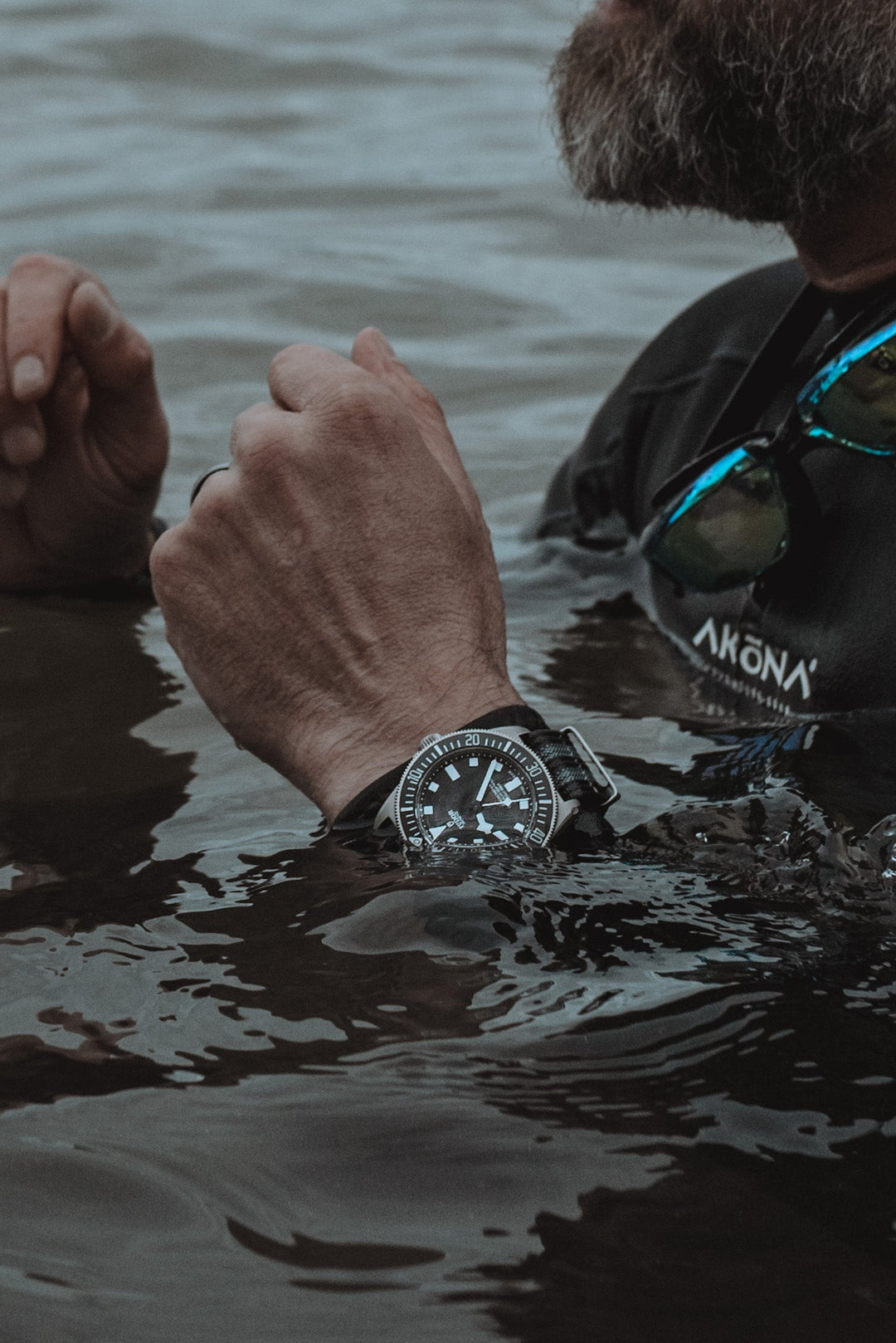The Essential Guide to Military Watch Straps: Types, Uses, and Features
Watches have long been an integral part of military gear, serving not only as a functional tool but also as a symbol of precision and discipline. One of the key components that contribute to a military watch's functionality and adaptability is its strap. Military watch straps come in various types, each designed for specific purposes, environments, and missions. In this blog post, we’ll explore the different types of watch straps used in the military, their materials, and their unique features.
1. NATO Straps
Overview
NATO straps, originally designed for the British military in the 1970s, are perhaps the most recognizable type of military watch strap. Made from nylon, these straps are known for their durability, lightweight nature, and ease of use.
Features
- Construction: NATO straps consist of a single piece of fabric that threads through the lugs of the watch, providing an extra layer of security if one of the spring bars fails.
- Water Resistance: The nylon material is water-resistant, making it suitable for various weather conditions and environments.
- Variety: Available in a wide range of colors and patterns, NATO straps can be easily swapped out, allowing soldiers to customize their watch to fit their uniforms or personal style.
Use Cases
NATO straps are ideal for combat situations and rigorous outdoor activities, thanks to their strength and comfort. Their quick-dry capabilities also make them a favorite in humid or wet conditions.
2. Zulu Straps
Overview
Zulu straps are similar to NATO straps but feature a slightly different design and are generally made from thicker materials. They were initially developed for military use but have gained popularity among civilians as well.
Features
- Thicker Nylon: Zulu straps are often made from heavier nylon, providing added durability and comfort.
- Rugged Buckles: They usually come with a more robust buckle system, which enhances their reliability in demanding situations.
- Additional Keepers: Zulu straps often include extra keepers to secure the excess strap length, ensuring a tidy appearance.
Use Cases
These straps are perfect for heavy-duty operations, as their thickness and sturdiness make them less prone to wear and tear in extreme conditions.
3. Leather Straps
Overview
While not as common in front-line military gear, leather straps are still used in military contexts, especially in dress uniforms or more formal occasions.
Features
- Material: High-quality leather is used for its durability and comfort. Some military leather straps are treated for water resistance.
- Style: Leather straps offer a classic look that can be easily dressed up or down, making them suitable for various settings.
- Customization: Many leather straps can be customized with specific military insignia or patterns.
Use Cases
Leather straps are often seen on military dress watches, providing a sophisticated look while still offering the ruggedness needed for military use.
4. Rubber and Silicone Straps
Overview
Rubber and silicone straps are increasingly popular in military watches, especially in roles where water resistance and flexibility are paramount.
Features
- Waterproof: These materials are completely waterproof, making them ideal for underwater operations or harsh weather conditions.
- Comfort: Rubber and silicone straps are lightweight and comfortable against the skin, making them suitable for extended wear.
- Durability: They are resistant to sweat, saltwater, and UV rays, ensuring longevity in diverse environments.
Use Cases
These straps are commonly used by naval forces and in special operations where durability and water resistance are crucial.
5. Velcro Straps
Overview
Velcro straps are a versatile and adjustable option used in various military contexts, particularly in situations requiring rapid adjustments.
Features
- Adjustability: Velcro allows for easy size adjustments, ensuring a snug fit regardless of clothing or gear.
- Lightweight: Made from synthetic materials, these straps are incredibly light and can be quickly put on or removed.
- Compatibility: Velcro straps can be easily attached to tactical gear or uniforms, providing seamless integration into military attire.
Use Cases
These straps are often used by special operations forces, where adaptability and speed are essential in dynamic environments.
Conclusion
Choosing the right watch strap is crucial for military personnel, as it can significantly impact functionality, comfort, and adaptability in various situations. From the rugged NATO and Zulu straps to the sleek leather and waterproof rubber options, each type of strap offers unique advantages tailored to specific needs. Understanding these different straps helps military personnel make informed choices that enhance their operational effectiveness, ensuring that they remain equipped and ready for any challenge that comes their way.
Whether you’re an active service member, a military enthusiast, or someone seeking a reliable watch strap for outdoor adventures, the options discussed here offer a blend of durability, functionality, and style that meets the demands of military life.





